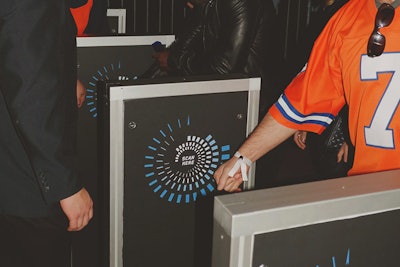
The way brands and planners use apps, beacons, and other form of technology for their events is evolving and maturing. While early adopters may have been eager to try the latest gadgets simply because they were new, now the focus is on creating meaningful experiences for attendees—with the technology facilitating that experience but not starring in it. As co-founder and C.E.O. of Connect & Go, Anthony Palermo has been one of those leading the use of contactless solutions such as R.F.I.D. and N.F.C. for access control, cashless payments, and social sharing for clients including DirectTV, Pepsi, and Target. Now Palermo is encouraging brands and planners to take a holistic view of their event technology strategy using what he calls a four-dimensional structure. “This is a philosophy, a formula that seems to work to create a complete experience we can control, share, and relive,” he says. Here is how Palermo describes the four elements of a comprehensive technology strategy:
1. Identification
The first element is to use technology to identify each attendee. Palermo says for most of his clients that means using R.F.I.D. in a wristband, badge, or sticker, but there are many other solutions such as Bluetooth, mobile apps, or even facial recognition. The identification may be a simple as the person’s name and email address or much more complex to include job functions, interests, and past events attended. “It’s difficult to create a powerful, personalized experience if we don’t know who they are,” Palermo says.
2. Engagement
Once planners determine what type of technology they will use to identify each individual at an event, the next step is to determine how that technology will be used on site. “For example, what does that R.F.I.D. chip in your badge interact with? It could interact with screens at the entrance door, it could interact with cashless payment systems, it could be an access control system, a sponsor activation, the lights, the sound, really anything that will be creating the experience at the event,” Palermo says.
3. Social sharing
Along with deciding how the technology will enhance the experience on site, Palermo says planners also should use it to maximize the extension of their events to those not in attendance. One of the most common ways to do this is to ask attendees to link their social media accounts to their event badge or wristband so as they move through an event they can simply tap the badge on a scanner to post photos and comments to their networks.
4. Content storage
Palermo says this is an emerging—and effective—application of event technology: using it to create long-term storage and easy retrieval of both overall event content and an attendee’s individual experience. With so much content created at an event, by hosts, attendees, and presenters, it is a logical next step to employ technology to compile and provide long-term access to that content. An example of this is Facebook’s “Look Back” videos that it automatically created for users in 2014 to coincide with the site’s 10-year anniversary. “Imagine if an event does this. So when you come back a year later to sign up we can say, ‘Look at how great your experience was last year.’ And that may include your personal highlights but it also might be event highlights so the host influences the narrative,” he says. “It becomes the family photo albums of our experiences.”



















